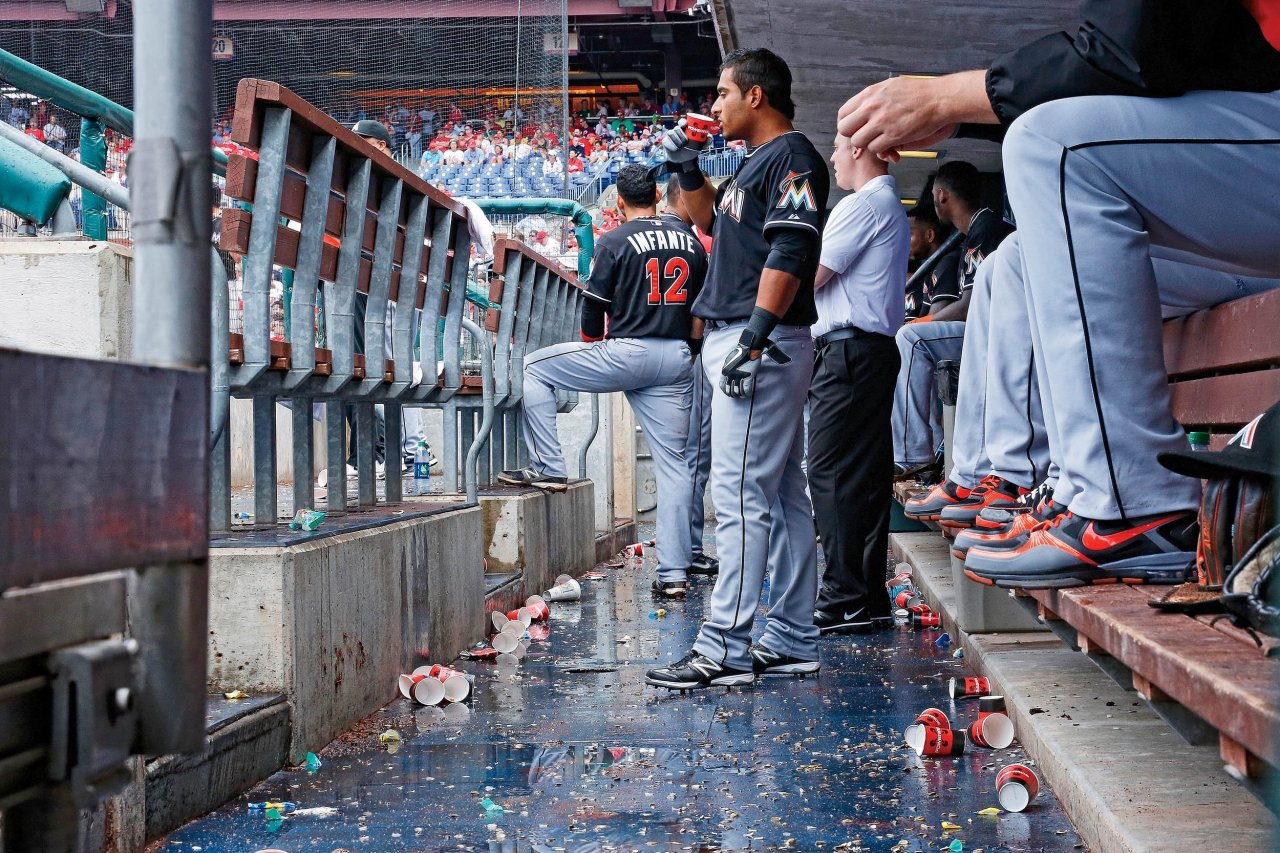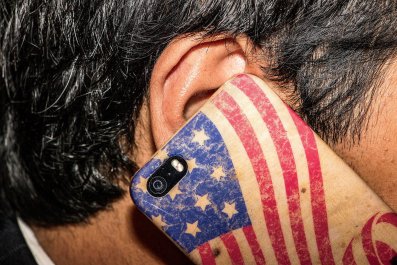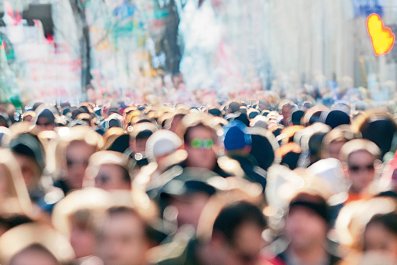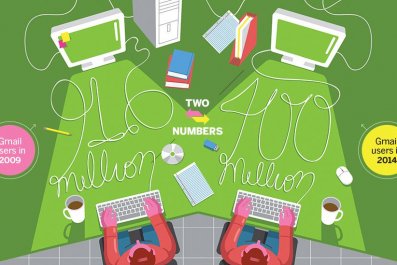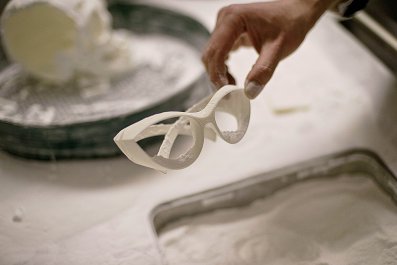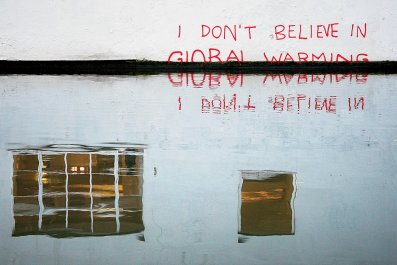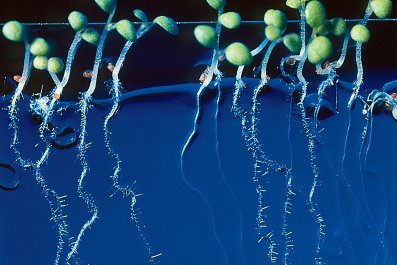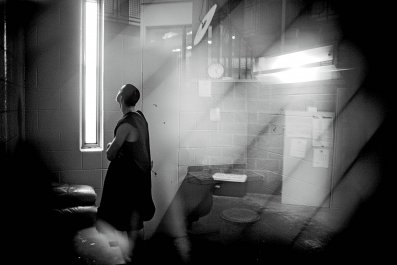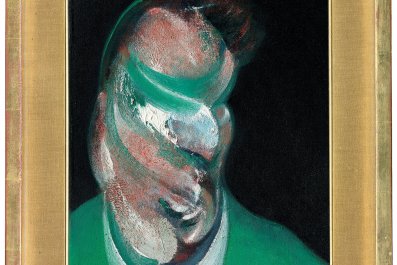On a balmy May night at Yankee Stadium, nearly 50,000 fans rush from their seats almost immediately after Yankees outfielder Brett Gardner grounds to first for the final out in the game, a 5–3 loss to the Pittsburgh Pirates. They stream out to the concrete concourse, down the ramps and into the industrial-size elevators that take them from the upper decks all the way down to the street level
In just a few minutes, they are all gone, but they leave plenty behind. Their cupholders are stuffed with high-priced "souvenir" cups half-filled with soda and beer, and on seats are soggy wrappers, cardboard boxes and tubs holding the greasy dregs of a ballpark dinner. All this trickles down onto the seatbacks and floors to join pooling piles of peanut shells, spilled drinks and hot dog detritus: All-American waste.
That mess is tough to clean, and, worse, it traps bacteria and other unhealthy organic matter, creating a veritable "mold bowl" that can last all season long.
One company may have a solution. Pureti, a "distributed" organization (it has a lab in Connecticut, a factory in Michigan, a president in Ohio and a vice president of sales in California), has designed, tested and is now marketing a suite of spray-on products made with titanium dioxide (TiO2, aka titania) it says can transform any surface into a self-cleaning dynamo that not only kills grime but lowers air pollution in the vicinity.
Glen Finkel, Pureti's co-founder and CEO, insists that it is first and foremost a health care company; he believes widespread use of its products would vastly improve public health by lowering pollution levels outside and making air healthier to breathe. But as a veteran businessman (Finkel helped run U.S. Shoe until it was bought out by Nine West), he knows health doesn't sell. So he's offered companies something much closer to their hearts (and bottom lines): the "hard ROI"—business lingo for "return on investment"—of cost savings on weekly cleaning bills.
Pureti wants to start by making clients of some of the modern world's most hallowed grounds: the stadiums and arenas that host the globe's professional baseball, football (both kinds), hockey and basketball leagues. So far, Pureti has hooked one major U.S. sports venue: Sun Life Stadium, home of the Miami Dolphins of the National Football League. Sun Life (formerly and more famously known as Joe Robbie Stadium) is a 25-year-old coliseum that holds 75,000 fans per game—and the detritus they create.
"Between the heat, and the humidity, and the beer, the people maintaining the stadium had to power-wash after every football game," says Finkel. According to John Kennedy, DTZ's vice president of operations support, cleaning a football stadium costs between $60,000 and $90,000 per game, and it wastes a whole lot of water.
So Finkel took some Pureti products down to Florida last season, and gave DTZ, the stadium's facilities management company, a test drive: They chose a small section of the stadium floor and covered half of it with Pureti and left half untreated, as a control.
They tested it through an entire football season. Within weeks, "it was clearly evident" which rows of seats were in the control group and which had been treated with Pureti, says Kennedy. "All it would take is one day of sunshine, and one aisle would snap back to being clear and clean, and the other would discolor, and you'd see evidence of mold accumulation. We'd have to pressure-wash the untreated row more aggressively and more often than the treated row."
In March 2014, DTZ had Pureti coat the entire stadium with its spray, which Finkel says will last for at least five years.
Globally, other stadium managers are starting to hear about the company. Pureti was asked to bring its product to the Nou Camp, the home of Futbol Club Barcelona (aka Barca) and the largest stadium in Europe. They haven't yet coated that centerpiece of Catalonian athletics, but Finkel expects it to happen sometime in the coming year. He says there are rumblings that they'll be asked to work on the 2018 World Cup.
The truth, though, is that the whole notion of "self-cleaning" is really just a Trojan horse to get the pollution-lowering technology into and onto as many buildings as possible.

Buzzword Bingo
This could be the game-changing technology we've all been waiting for. It's got all the right buzzwords: nanotechnology, air-purifying, antimicrobial, green, sustainable. And best of all, you can save the planet without spending hundreds of dollars on "locally sourced" organic food, feeling bad about buying a new iPhone every two years or having to give up driving your car.
Just spray Pureti's proprietary titanium dioxide-based liquid all over your windows and walls, and pat yourself on the back: You've turned your home into a self-cleaning, pollution-eating machine.
Sporting facilities are just one of many structures and products being slathered in Pureti's liquid gold: The caretakers of La Pedrera, a Gaudi-designed building and UNESCO World Heritage Site in Barcelona, Spain, are using it to keep mold from growing in the structure's complex crevices. Hotels from the Bahamas to Venice use it in their luxury suites to manage odor and improve air quality. London is considering a citywide program to apply it to roads and public buildings to get levels of NOx (mono-nitrogen oxides that cause ozone) down to acceptable levels (the U.K. was recently fined by the European Union in an effort to force it to reduce its pollution levels). NASA plans to test it for use on solar panels: If the panels stay cleaner longer, they stay at their highest level of energy efficiency—and it's much harder to clean surfaces floating in space than those down on Earth. HOK, the global architecture and interior design titan, and Johnson Controls, the building efficiency giant, are both beginning to include Pureti's product in the specification processes for the buildings they manage.
Finkel's pet project, though, is with the Asthma and Allergy Prevention Co., which is applying Pureti as part of a new protocol for transforming regular homes into hospital-grade environments so that children with serious respiratory issues can stay out of the emergency room. It is currently in the Food and Drug Administration approval process; if the federal regulator gives the thumbs-up, Pureti could soon be considered a health product.
If you want to know how it works, start by taking your eyes off the page and looking around you. If you're anywhere inside, chances are, your glance passed over at least one painted surface. Mayan gold, eggshell or Tuscan teal—it doesn't matter much, because every single color starts with the exact same thing: titanium dioxide. That's because titania pigment is the whitest of whites, with a brightness and ability to refract light that is unmatched in the world of material sciences.
The stuff shows up in products as wide-ranging as ink, toothpaste, cosmetic products, sunblock and plastics, and there's a whopping pound and half of titania in every gallon of paint. It's common and it's cheap. The core mineral involved, titanium, is the ninth-most abundant element in the Earth's crust.
It does have its flaws. If you slap a coat of a regular old titania pigment–based house paint on your wooden fence out in the yard, it'll eventually start to crack and peel. For years people didn't know why the paint seemed to disintegrate when exposed to the sun, until two Japanese researchers at the University of Tokyo, Kenichi Honda and Akira Fukishima, discovered that the white pigment—the titania—was doing something called photocatalysis.
Simply put, titania uses light to speed up chemical reactions around it: Ultraviolet rays (from the sun or from artificial light sources) hit the surface of an object that has been covered in titania, and that triggers a chemical reaction in which water molecules (which it gets from moisture in the air) are momentarily split into hydroxyl radicals (aka "free radicals," for those playing buzzword bingo). Then these hydroxyl radicals quickly seek out any organic matter touching that surface and break it down into smaller molecules.
That's a bad thing for your white picket fence, but it's a good thing for planet Earth, because, for the most part, the organic molecules in the air tend to be dangerous for humans, the environment or both. The air is loaded up with matter like volatile organic compounds (VOCs), which cause all sorts of terrible health effects, NOx and grime (which makes things dirty and attracts disease-carrying bacteria).
When you hear scientists, legislators and pundits warning that our air is killing us, this is what they are talking about. Photocatalytic titania cuts the stuff down. "The idea is that you convert VOCs into carbon dioxide and water, and you convert NOx in the air into something like nitrate that would just wash away," says Jonathan Raff, a professor of environmental science and chemistry at Indiana University. "All these things would just go away, and you wouldn't have a smog problem."
Honda and Fukishima discovered that titania's one flaw as a pigment made it a tremendous chemical superpower: It ate up paint, but it also chewed up dangerous molecules and spit them out as innocuous compounds. "It's polymorphously perverse," says Finkel. "It doesn't care whether the organic molecules are Jell-O, or a piece of gum, or a germ, or a virus, or hazmat.… It's lunch."
The discovery was truly groundbreaking—the two men are by some accounts currently on the short list to receive a Nobel Prize any year now. And they made that astonishing discovery over 40 years ago, in 1967.
So where has it been? If the stuff is so miraculous, why don't we all know about it? Pureti and a few other companies have figured out ways to make crystal-clear titania coatings; why isn't every building we work and live in, and every material good we own, covered in titania? What are we waiting for?
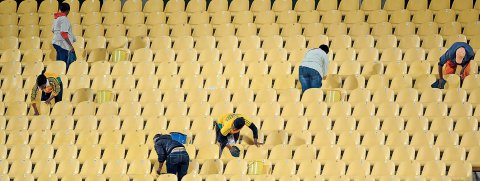
The Long-Delayed Miracle
"TiO2 has been studied to death," says Alexander Orlov, a materials science and engineering professor at Stony Brook University. "There are still some scientific issues to address, but the fact that it works has been confirmed by many research groups."
Orlov and Raff have both published papers showing that as part of the chemical process that occurs during photocatalysis, dangerous molecules can be temporarily created. "[VOCs] get partially oxidized," says Raff, "which means they might form aldehydes or oxidized versions of the molecules." Both of those are pretty bad for the human body, if they stick around. But Orlov, who spent seven years advising the British government on the safety of nanotechnology and hazardous substances, argues that overall, the process is a net positive—it's getting rid of lots more bad stuff than it creates.
"These papers just show one of the elements, and one of the possible reaction pathways," he says. Taken in the bigger context, this is just small potatoes. Orlov points out that the same issues are in chlorinated water—the chlorination process creates dangerous intermediaries along the way to generating healthy drinking water.
According to Orlov, the biggest problem with photocatalytic titania is actually the marketing. The first attempts to bring titania to the market were in 1998, when the four largest glass manufacturing companies in the world all simultaneously launched "self-cleaning" photocatalytic glass. U.K.-based Pilkington, for example, created and heavily marketed a product called Activ. Neil McSporran, a civil engineer by training and the current manager of business development at Pilkington North America, says Activ has sold well enough in the U.K. and Canada, but in the U.S. sales have been disappointing. That's why they are abandoning the "self-cleaning" rhetoric for the branding du jour: They're going green.
"One thing we've been revisiting is how we can change our message," says McSporran. "What's become more important than the easy-clean element is the degradation of harmful pollutants." According to McSporran, over the past few months, internal company discussions have centered around ways to make the science their key marketing message.
Finkel says Pureti had been working on this product for years without getting any traction, in part because potential clients thought it was too good to be true. "That was a big albatross around our neck," he says.
In Japan, by luck of historical confluence, the marketing problem solved itself. In 1998, a Japanese ceramics company took titania nanopowders and melted them into a glaze for tiles. The tiles were used in schools and hospitals throughout the country.
A few years later, a previously unknown viral respiratory illness spread rapidly through Eastern Asia. The disease, severe acute respiratory syndrome, which became widely known as SARS coronavirus, eventually infected 8,096 people worldwide, killing 774. Most of the stricken were in China, Hong Kong and Taiwan, but the virus reached Thailand, Vietnam, Singapore, and the Philippines—not to mention Canada and the United States. Twenty-nine nations saw at least one of their citizens fall ill.
But not Japan. Even though the country was close to the epicenter of the disease, SARS never made it to its shores. And when the tiles were found to inhibit the spread of SARS (and other viral and bacterial diseases), Honda and Fukishima became hometown heroes.
Nowadays, if you're launching a new product in Japan, you better include titania. Companies including Toyota, Panasonic, Fujitsu and Bridgestone all maintain significant brand currency from the aura titania provides, and windows, walls and even roads are coated in the stuff. Titania in Japan is quite literally a billion-dollar market. There's even a museum dedicated to photocatalysis in Kanagawa.
Be the Best, Second
There's nothing nearly as impressive going on in the United States. Pureti's R&D lab is a small outfit, not much more than a garage in a business park in suburban Connecticut. There, two scientists, co-founder and senior chemist John Andrews and director of technical operations Bikash Rajkarnikar, mix new product batches in equipment a good high school chem lab would have. They run tests on sample materials sent in by potential clients, try to figure out what other great things their product can do (they just found out it can prevent spot rotting when used on greenhouse glass) and watch the geese walk across their parking lot.
They're also trying to figure out how much photocatalytic titania really clears the air. They have a small metal chamber the size of an office cubicle that they fill with VOCs. Then they stick some Pureti-coated glass inside, along with an $8,000 VOC sensor, and see what happens. The results are signs pointing in the right direction—the air is cleaner post-Pureti.
These experiments, though, have been done before. Finkel and his team regretfully admit they have a problem: There's really no way to test titania in the real world. It's just too complicated, and too big. "When it's cleaning up air, it's cleaning up air for the entire globe," says Orlov.
"All of the studies have been in laboratories," adds Raff. "The real verdict has to come from real, in-the-field, outdoor studies." It's easy enough to figure out what happens in a small, controlled space, but cities are complex beasts. Orlov says that atmospheric science has only a "rudimentary knowledge of the impact of building materials on urban air quality. It's the next frontier."
An hour and a half south of the lab is Finkel's office, a modest space in a narrow building crammed into a lively block in Manhattan's financial district. Finkel, in a former life, was a practicing psychologist ("He reads people very well," says Orlov), and he knows how to guide the conversation. He's there to convince you that his product can save the planet. If only you'd agree, you could help him save the planet, too.
"I don't want to get on my soapbox, but it's become conventional wisdom that the way to make money in America is to be the best, second," says Finkel wistfully. "No one wants to try anything. Everyone talks about innovation—it's as American as apple pie—but get someone to go first? Forget about it."



